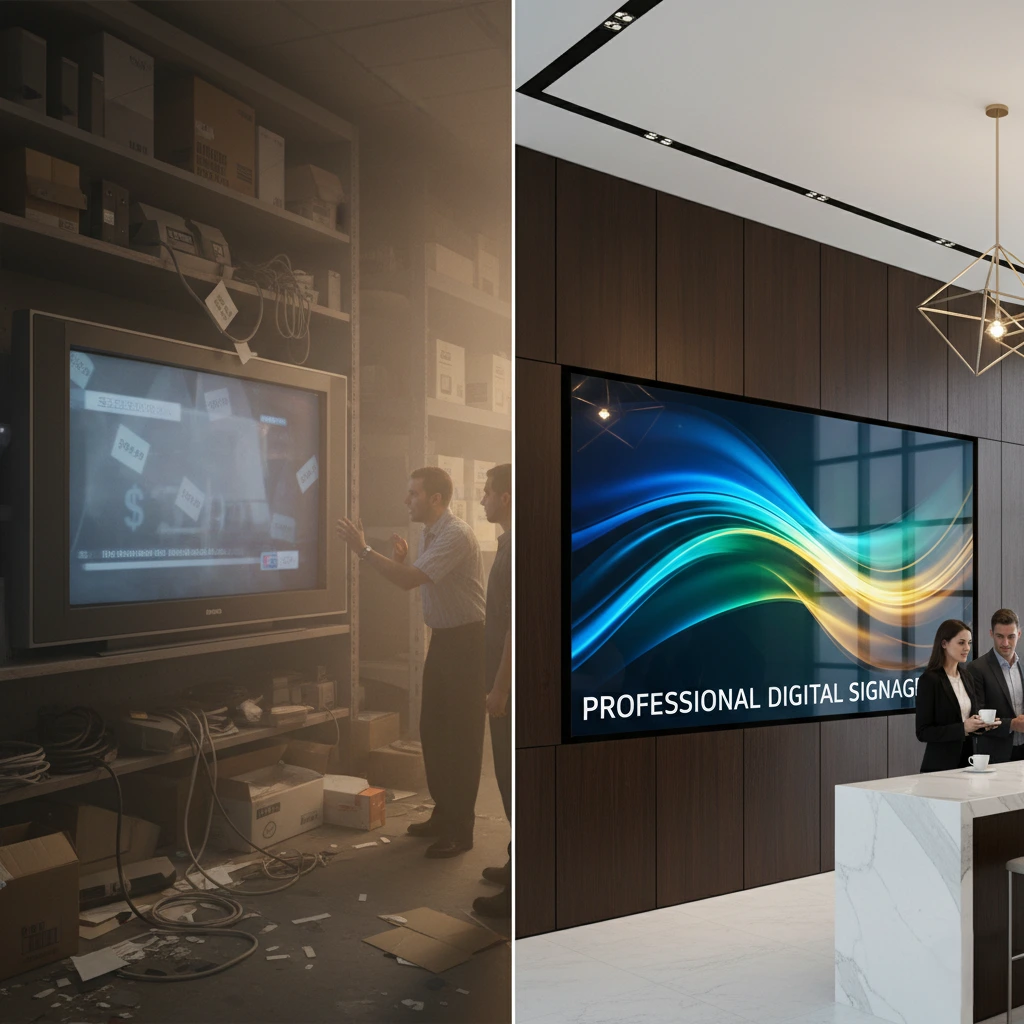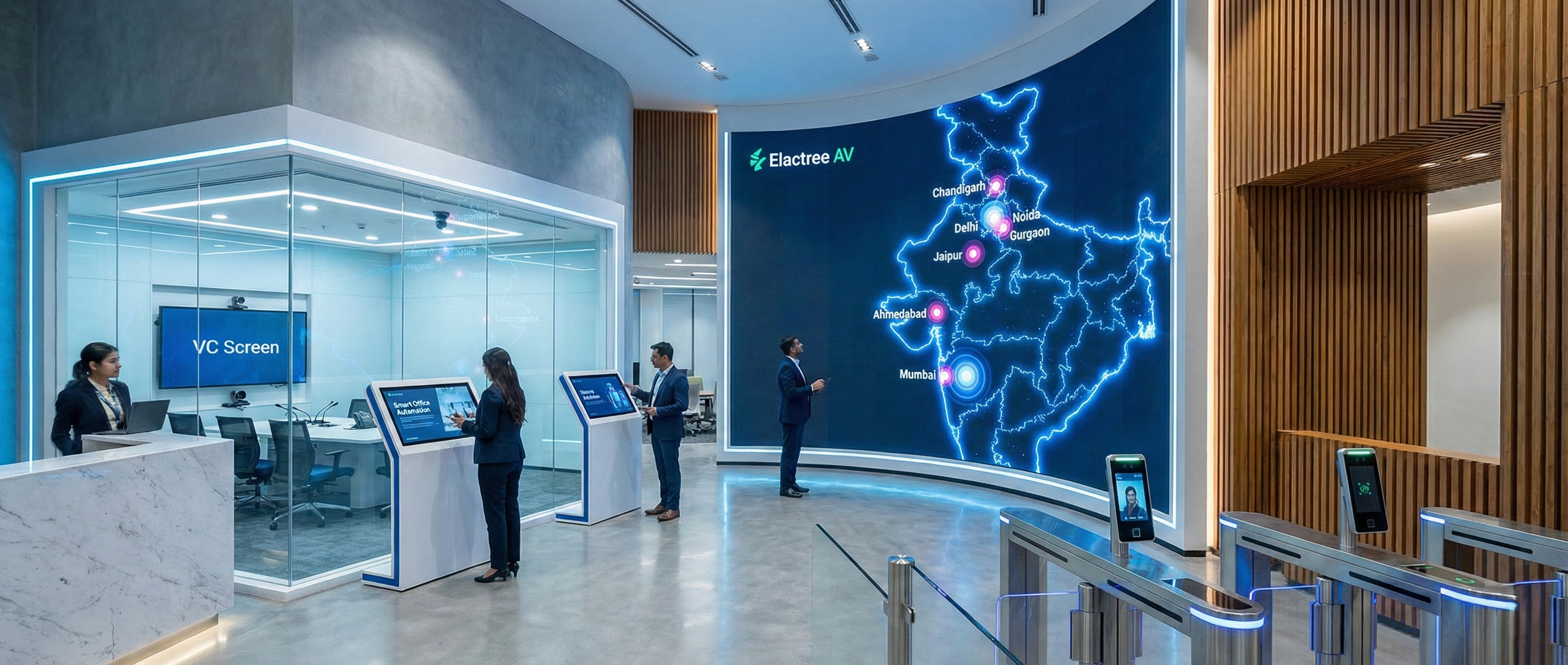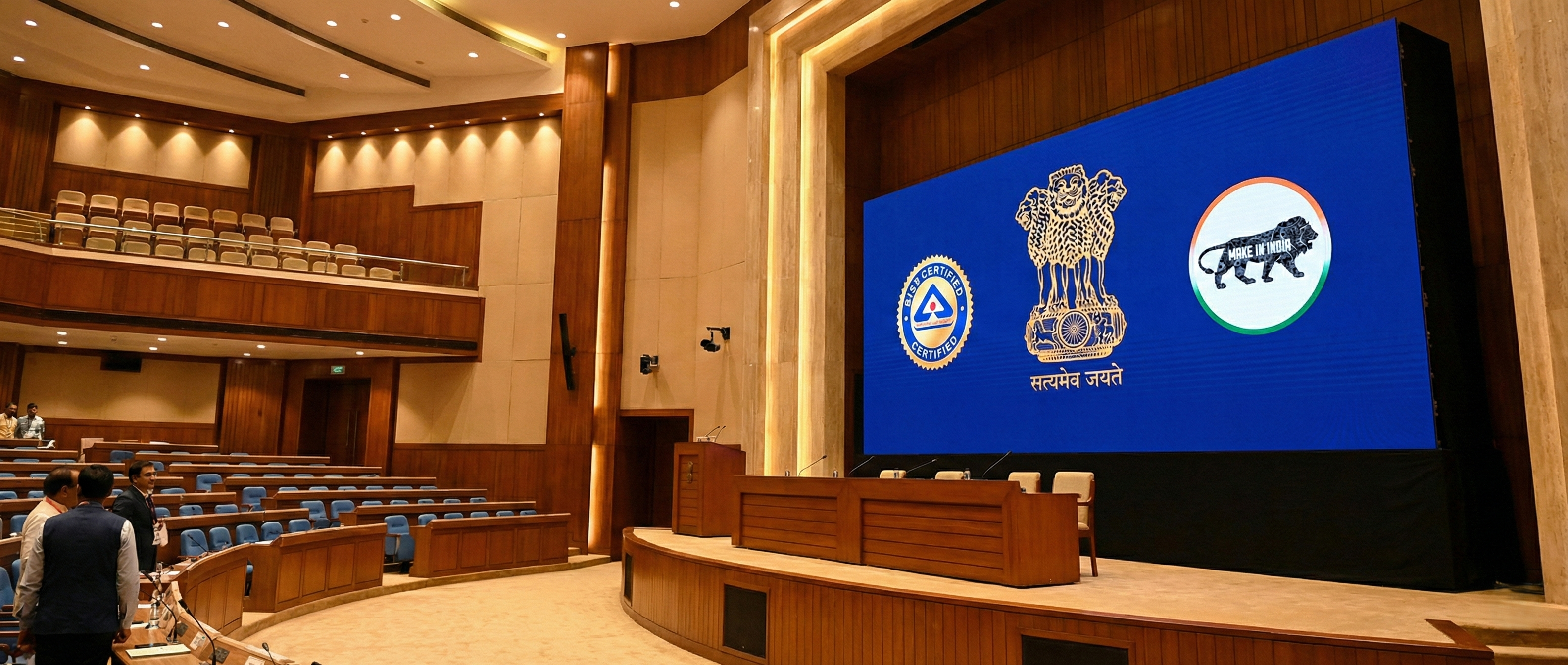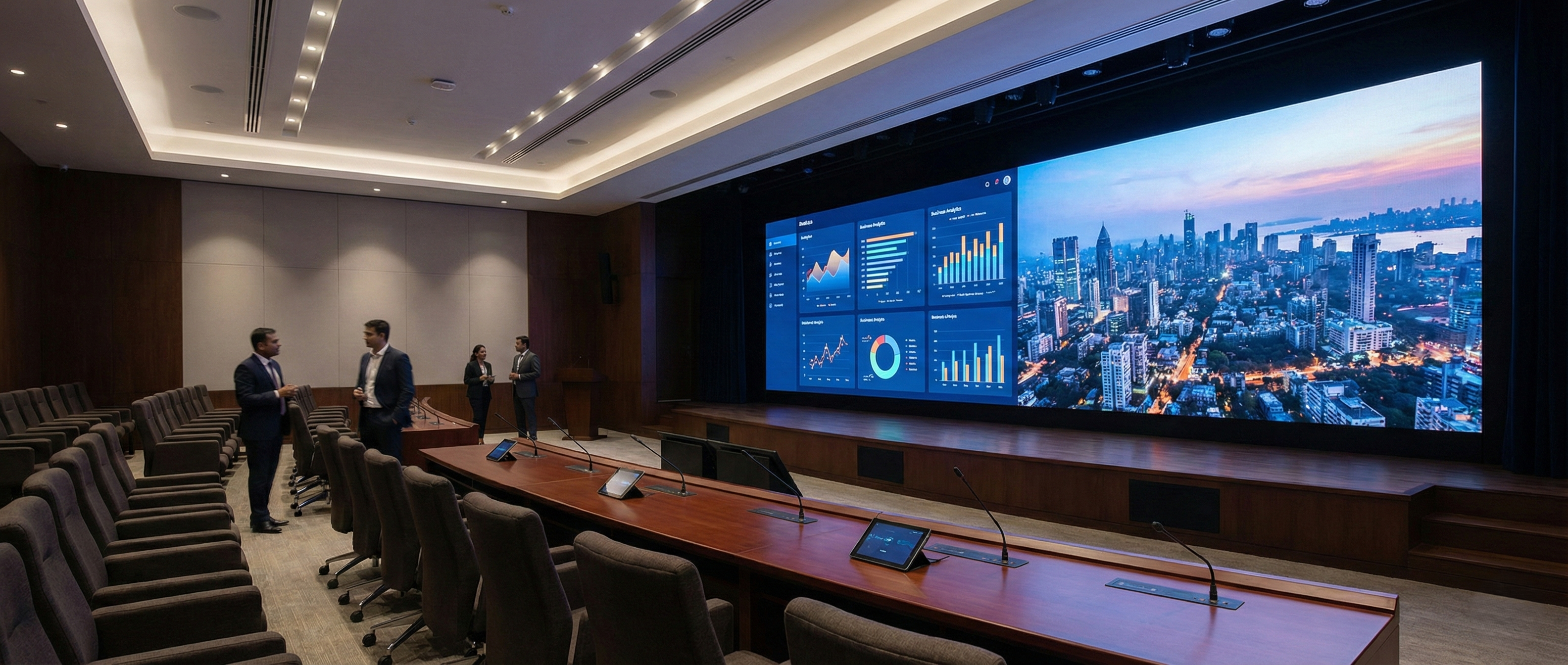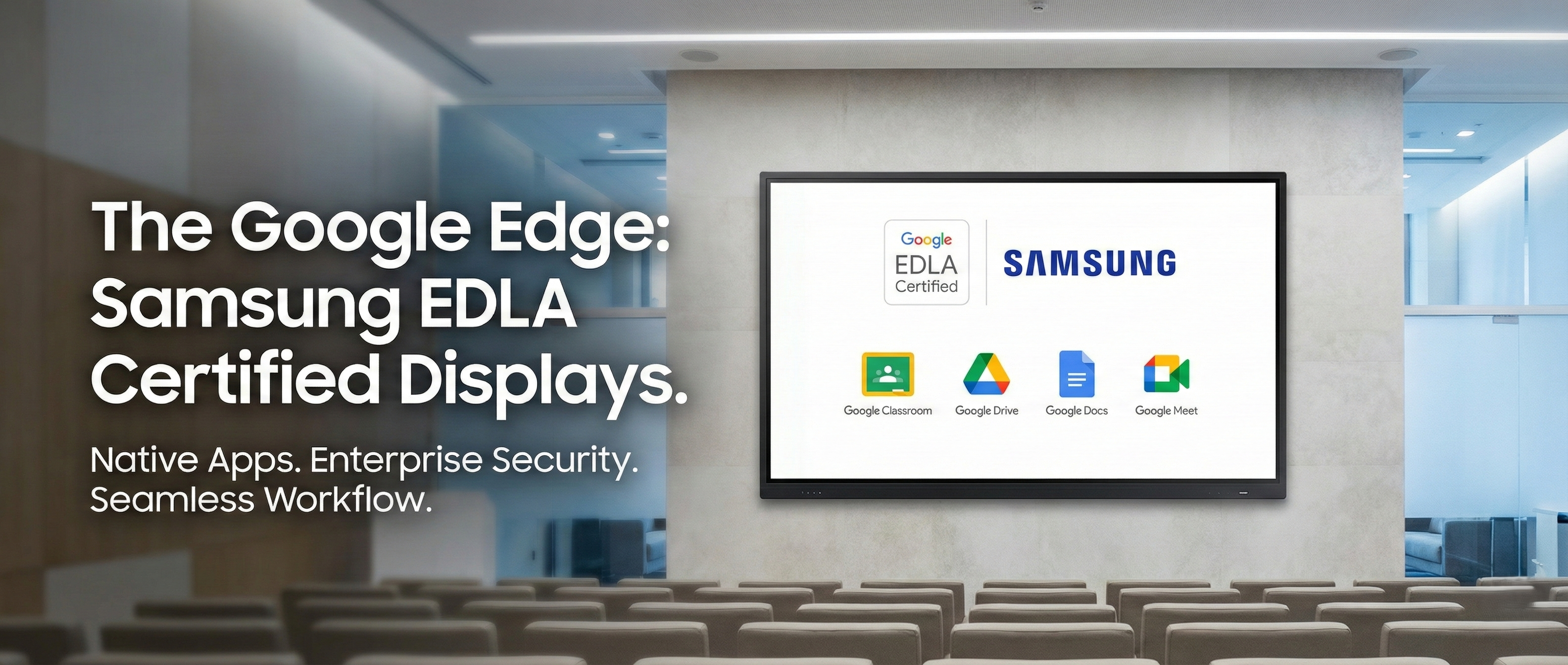In the bustling, competitive landscape of modern India, businesses are constantly seeking an edge to capture customer attention and streamline operations. For years, many small and medium-sized enterprises (SMEs) have opted for a seemingly budget-friendly solution for their digital signage and in-store communication: a regular consumer television. However, a growing number of savvy Indian businesses are now making a crucial and profitable shift, recognizing that a consumer TV simply isn't built for a commercial environment. The reason is simple: while they may look similar on the surface, commercial displays are fundamentally different from consumer TVs, offering superior durability, performance, and functionality that directly impacts a business's bottom line.
This trend is driven by India's rapidly expanding digital signage market, which is projected to reach $9.30 billion by 2033, according to the IMARC Group. This massive growth is a testament to the fact that businesses are increasingly relying on screens for everything from menu boards and promotional videos to corporate communication and wayfinding. This comprehensive guide will explain the critical differences between these two types of displays and provide actionable insights into why Indian businesses are switching to commercial displays for a smarter, more reliable, and ultimately more profitable visual strategy.
1. Built for Endurance: Durability & 24/7 Performance
The most significant difference between a consumer TV and a commercial display lies in their build quality and intended use. A TV is designed for the home, where it runs for an average of 4-6 hours per day in a climate-controlled environment. A commercial display, on the other hand, is engineered for the rigors of a business setting, often operating 16/7 or even 24/7.
The Unseen Differences in Hardware
Robust Components: Commercial displays are built with industrial-grade components, including more durable power supplies, enhanced cooling systems (with built-in fans and larger heat sinks), and stronger metal chassis. Consumer TVs, with their plastic frames and minimal cooling, are simply not equipped to handle continuous operation and will quickly overheat, leading to premature failure.
Preventing "Burn-In": When a static image (like a logo, menu item, or welcome message) is displayed for long periods, it can cause "image retention" or "burn-in," where a ghost of the image remains on the screen. Commercial-grade displays include built-in technologies like pixel shifting and heat management to actively prevent this, ensuring your content always looks clean and professional.
Longer Lifespan: While a consumer TV may last a year or two in a commercial setting, a professional display is rated for a much longer lifespan, often 50,000 to 100,000 hours of continuous use. This means a single commercial display can last for over 5-7 years, while a business using a consumer TV may need to replace it multiple times, ultimately costing more in the long run.
For a restaurant in Mumbai, a digital menu board that is on from morning to night, or a retail store in Delhi with a promotional screen that runs 12 hours a day, the choice is clear. The investment in a more durable, purpose-built commercial display saves money on constant repairs and replacements.
2. Optimized for Business: Brightness & Viewing Modes
A living room has controlled lighting. A store, restaurant, or corporate lobby often has bright, high-ambient lighting. This is where a consumer TV’s performance falls short.
Standing Out in the Crowd
High Brightness (Nits): Most consumer TVs have a brightness of around 250-400 nits, which is perfectly fine for a home but can look washed out in a bright retail environment. Commercial displays offer brightness levels ranging from 500 to over 2,500 nits, ensuring content remains vibrant and legible even under direct sunlight or intense indoor lighting.
Anti-Glare Coatings: Commercial screens are often equipped with anti-glare or low-haze coatings that reduce reflections, ensuring your message is not obscured by a window or a bright light source.
Portrait Mode Capability: While consumer TVs are designed exclusively for landscape (horizontal) viewing, many professional displays are built to operate reliably in portrait (vertical) mode. This flexibility is crucial for applications like digital menu boards, wayfinding kiosks, or video walls, allowing for more creative and impactful installations. A vertically-oriented digital signage display at the entrance of a shopping mall, for instance, can command more attention than a standard TV.
3. Smarter for Business: Connectivity & Content Management
The true value of commercial displays extends beyond their physical attributes. They are part of a larger ecosystem designed to make content management and remote operation seamless and efficient.
The Brains Behind the Screen
Advanced Connectivity: Unlike consumer TVs with a few HDMI ports, commercial displays come with a wider range of inputs (e.g., DisplayPort, DVI, RS232, and LAN ports) that allow them to be easily integrated into a network or professional AV system. RS232 control, for example, allows for remote management of the display, including powering it on/off and changing settings.
Built-in Content Management: Many commercial displays come with a built-in System-on-Chip (SoC) and an integrated content management system (CMS). This eliminates the need for an external media player (like a PC or a streaming stick), reducing costs and simplifying the setup. A business can easily schedule content, update promotions in real time, and monitor the display's status from a single, centralized dashboard.
No Trolls Allowed: Consumer TVs have accessible control buttons and can be controlled by any brand-compatible remote. This makes them vulnerable to tampering in public spaces. Commercial displays come with "public mode" or control lockout features that prevent unauthorized changes to the settings or content, securing your brand's message.
4. The Financial Reality: Total Cost of Ownership
While a consumer TV has a lower initial price tag, the total cost of ownership (TCO) for a business is almost always higher. The upfront savings are quickly erased by a number of hidden costs and risks.
The Hidden Costs of a "Cheap" TV
Voided Warranty: Manufacturers of consumer TVs explicitly state that their warranties are voided if the TV is used in a commercial environment. This means that if the TV breaks down due to overheating or burn-in (which it will), the business is on its own for the full cost of repair or replacement. In contrast, commercial displays come with a robust 3- to 5-year commercial warranty, often including on-site service.
Increased Maintenance & Downtime: Frequent breakdowns lead to costly repairs and a loss of sales and customer engagement. A malfunctioning screen showing a blank or "ghosted" image sends a negative message about the brand.
Lost Opportunity Cost: A consumer TV’s limited features mean a business can’t leverage advanced tools like real-time analytics, targeted content delivery, or interactive experiences. Investing in a professional display is not just about showing content; it's about leveraging a strategic tool to drive customer engagement and revenue.
FAQs: Your Guide to Choosing the Right Display
Q1: What is the main difference between a commercial display and a consumer TV?
The main difference lies in their purpose-built design. A consumer TV is made for home entertainment, while a commercial display is built for continuous, heavy-duty use in a business environment. This includes more durable components, advanced cooling systems, and features specifically designed for business applications like digital signage and video walls.
Q2: Can't I just use a consumer TV for a few hours a day to save money?
While you can, it's not a sustainable long-term solution. Even with limited use, a consumer TV is at risk of overheating and image burn-in due to static content. More importantly, the manufacturer's warranty is often voided by commercial use, meaning any problems become an out-of-pocket expense. A commercial-grade display offers a longer lifespan and a valid commercial warranty, making it a better long-term investment.
Q3: What is "burn-in" and why is it a problem for businesses?
"Burn-in" is when a static image, such as a company logo or a menu header, leaves a permanent shadow or "ghost image" on the screen. This is a problem because it makes your content look unprofessional and can obscure new messages. Professional displays are designed with special technology to prevent this, ensuring the screen remains clean and clear.
Q4: Do I need a separate media player with a commercial display?
In many cases, no. Many modern commercial displays come with a built-in System-on-Chip (SoC) and integrated software that eliminates the need for an external media player. This simplifies setup, reduces clutter, and lowers costs. You can manage and schedule your content directly from the display's onboard system, often via a user-friendly, cloud-based platform.
Q5: For a small business in India, is the higher upfront cost of a commercial display really worth it?
Yes, absolutely. The higher upfront cost of a commercial display is an investment that pays off quickly. When you consider the hidden costs of a consumer TV—like frequent replacements, voided warranties, high maintenance, and lost business from a malfunctioning screen—the commercial display offers a much lower total cost of ownership (TCO) over its lifespan. It’s a reliable, professional tool that helps a business run more efficiently and effectively.
Conclusion: Investing in Professionalism and Reliability
The decision to choose between a consumer TV and a commercial display is more than just a matter of price; it’s a strategic business choice. While a consumer TV may offer a lower entry point, its limitations in durability, performance, and functionality make it a costly and unreliable choice for any business in India aiming for growth and a professional image.
By switching to commercial displays, Indian businesses are not only investing in cutting-edge technology but also in reliability, efficiency, and a superior customer experience. This shift is a clear signal that businesses are moving beyond short-term savings to embrace long-term, strategic investments that deliver real, measurable returns.
Ready to upgrade your business communication?
Contact us today for a free consultation and find the perfect commercial display solution for your business needs.
Digital Signage for Retail: Click to explore branded digital signage screens
Video Walls and Their Applications: Click to explore branded range of active leds

